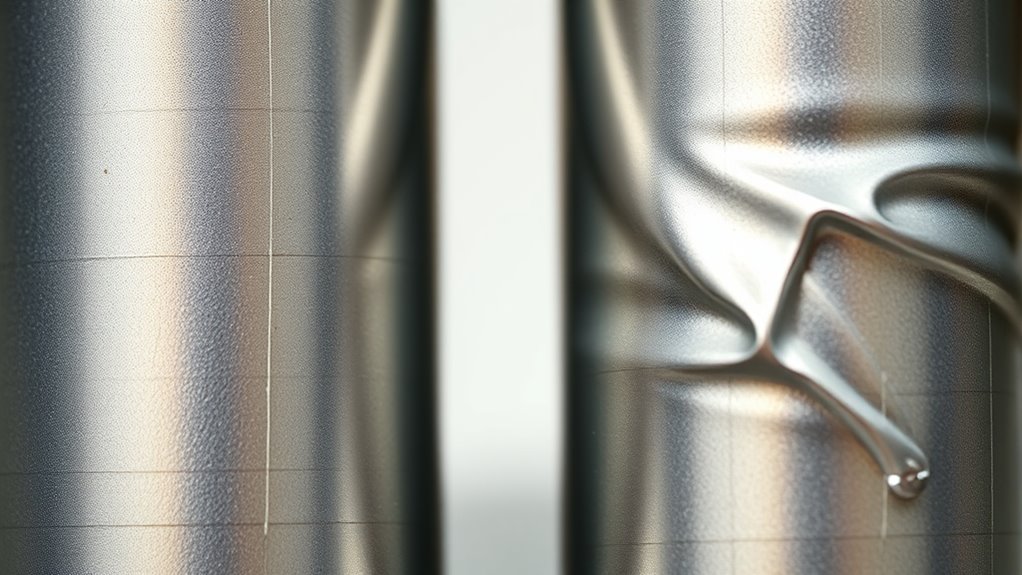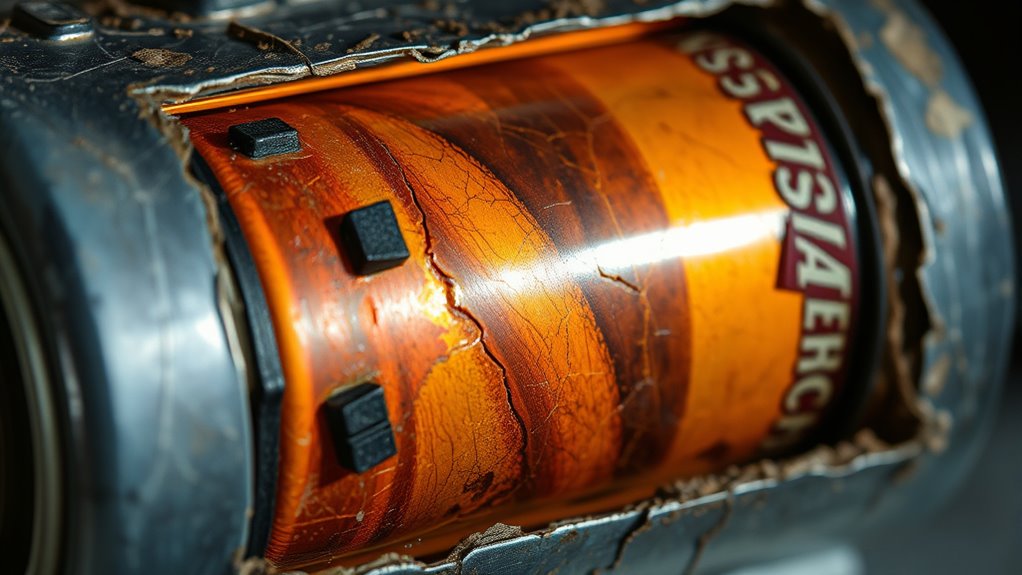The depth of discharge directly impacts your battery’s lifespan. When you regularly let it go to very low levels or fully deplete it, the chemical stress inside accelerates wear and capacity loss. Keeping your battery between 20% and 80% helps reduce this strain, prolonging its life. If you want to understand how to better manage your battery’s health and avoid early decline, there’s more valuable information ahead.
Key Takeaways
- Deeper discharges cause more internal chemical stress, accelerating battery wear and capacity loss over time.
- Limiting discharge depth to shallow levels extends battery lifespan by reducing chemical degradation.
- Full discharges (to 0%) increase cycle counts and shorten overall battery life.
- Managing discharge levels between 20% and 80% minimizes damage and maximizes longevity.
- Different battery chemistries have varying tolerance to discharge depths, influencing how much wear occurs.

Understanding how deeply you discharge your battery is essential because it directly impacts its lifespan. When you use a battery, whether in a smartphone, laptop, or electric vehicle, the amount of energy you drain before recharging—known as the depth of discharge—plays a pivotal role in how long the battery remains healthy. The deeper you go in discharging your battery, the more stress you place on its internal chemistry, which accelerates wear and reduces overall lifespan. Battery chemistry determines how a battery reacts to different depths of discharge; some chemistries, like lithium-ion, are more tolerant of shallow discharges, while others may degrade faster with deep cycles. Understanding this relationship helps you optimize your charging habits to extend your battery’s useful life. Being aware of relationships between discharge levels and battery health allows for smarter usage decisions.
Charging cycles refer to each complete charge and discharge process your battery undergoes. Every time you fully drain and recharge your battery, you complete a cycle. But here’s the key: not all cycles are created equal. Shallow discharges—using only a small percentage of your battery’s capacity—count as partial cycles, which are gentler on the battery. Conversely, full discharges, where you deplete the battery completely, count as full cycles and cause more damage over time. This is because deep discharges strain the battery’s internal components, leading to faster capacity loss. If you regularly let your battery run down to zero, you’re shortening its overall lifespan considerably. Instead, aiming to keep your battery between 20% and 80% charge minimizes the number of full cycles and prolongs its health.
Battery chemistry also influences how much a battery can be discharged before it suffers damage. Lithium-ion batteries, for example, are designed to handle a certain number of charge cycles, and their longevity is maximized when you avoid deep discharges. Many manufacturers recommend keeping the battery within a moderate state of charge to prevent stress on the electrodes and electrolyte. Repeatedly discharging your battery deeply not only reduces capacity over time but can also cause irreversible chemical changes inside the cell. That’s why understanding your battery’s chemistry and managing your discharge levels are key to optimizing its lifespan.
In essence, you have control over how long your battery lasts by paying attention to how deeply you discharge it and how often. Keeping your usage within moderate depths and avoiding full discharges preserves your battery’s chemistry integrity, ultimately extending its service life. Being mindful of charging cycles and not pushing your battery to its limits allows you to get the most out of your investment, whether that’s a smartphone, laptop, or electric vehicle. Small habits—like charging before it hits zero or avoiding constant full charges—can make a big difference in the long run.
Frequently Asked Questions
How Does Temperature Affect Depth of Discharge Impacts?
Temperature critically influences how depth of discharge impacts your battery’s performance. When it’s too cold, the thermal impact reduces charge efficiency, making it harder to recharge fully and increasing wear. Conversely, high temperatures can accelerate degradation, even if you don’t discharge deeply. You should monitor temperature levels closely, as ideal conditions help maintain charge efficiency and extend your battery’s lifespan, regardless of how deeply you discharge it.
Can Shallow Discharges Extend Battery Lifespan Significantly?
Shallow discharges can considerably extend your battery’s lifespan because they reduce the number of charge cycles your battery undergoes. When you avoid deep discharges, you preserve more of the battery’s capacity over time. This means your battery stays healthier longer, maintaining ideal performance. By keeping discharges shallow, you help prevent capacity loss, allowing your battery to deliver consistent power and last much longer than with deep cycling.
What Are Optimal Discharge Levels for Different Battery Types?
You should tailor your discharge strategies based on battery chemistry. For lithium-ion batteries, keep discharges below 80% to prolong life, while nickel-based batteries tolerate deeper discharges but may degrade faster. Lead-acid batteries prefer shallow discharges around 50%. Understanding these ideal discharge levels helps you avoid damaging your batteries, ensuring they last longer and perform better. Always follow manufacturer guidelines for specific battery chemistries to maximize their lifespan.
How Does Cycling Frequency Influence Battery Degradation?
Think of your battery as a busy highway, where each charge cycle is a trip. Frequent trips wear down the road faster, leading to quicker battery aging. When you cycle your battery often, you’re accelerating that wear and tear, reducing its lifespan. Limiting charge cycles helps preserve its energy. So, by spacing out your trips, you keep your battery healthier longer, avoiding premature degradation and extending its overall life.
Are There Technological Advancements Mitigating DOD Effects?
You’ll be pleased to know that advancements in battery chemistry are now helping mitigate DOD effects. New materials and design improvements extend the battery’s state of health, allowing it to endure deeper discharges without significant degradation. These innovations mean you can use your batteries more flexibly, knowing that technology is actively working to preserve their lifespan. As a result, you gain longer-lasting performance and improved reliability over time.
Conclusion
Understanding how depth of discharge affects your battery’s lifespan is vital. For example, if you routinely drain your smartphone battery to 0%, it’ll wear out faster than if you only discharged it to 50%. By managing how deeply you discharge your batteries, you extend their longevity and save money in the long run. So, next time you use your device, remember: keeping the discharge shallow can make your batteries last much longer.










